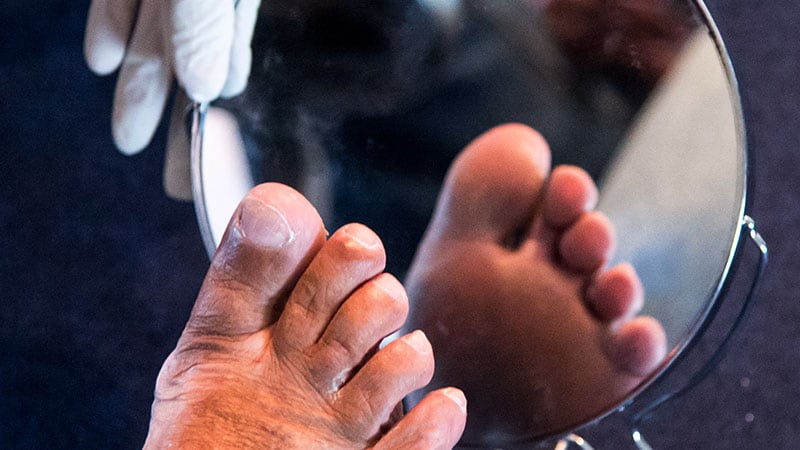New Tool Detects Diabetic Neuropathy Early
Core Concepts
Experimental skin blood flow measurement system shows promise in early detection of diabetic neuropathy.
Abstract
TOPLINE:
- Experimental system detects early diabetic neuropathy.
- Offers low-cost, portable, and noninvasive diagnostic solution.
METHODOLOGY:
- Study included 15 individuals aged 18-60.
- Vasoconstrictive and vasodilative stimuli assessed blood flow changes.
- Blood flow index values recorded using DOCS setup.
- BFI changes analyzed among groups using ROC curves.
TAKEAWAY:
- Control group showed significant BFI changes.
- DM group had moderate BFI changes.
- DN group showed minimal BFI changes.
- LTH stimulus effective in distinguishing DN patients.
IN PRACTICE:
- System can be a potential noninvasive monitor for diabetic neuropathy.
SOURCE:
- Study conducted by Vysakh Vasudevan and Sujatha Narayanan Unni, published in the Journal of Biophotonics.
LIMITATIONS:
- Small sample size limits broader applicability.
DISCLOSURES:
- Authors declared no conflicts of interest.
Customize Summary
Rewrite with AI
Generate Citations
Translate Source
To Another Language
Generate MindMap
from source content
Visit Source
www.medscape.com
New Tool May Offer Diagnostic Edge for Diabetic Neuropathy
Stats
BFI value showed a 33% decrease in control group due to postural venoarteriolar reflex (VAR) and a 140% increase due to local thermal hyperemia (LTH).
DM group had BFI changes of 9% and 53% for VAR and LTH, respectively.
DN group showed minimal changes during VAR and LTH (< 5%).
Significant differences in BFI values during LTH stimulus were noted between DN and DM groups and between DN and control groups (P < .0001).
Quotes
"The system can be qualified as a potential candidate as a noninvasive, low-cost, portable, and continuous monitor in the early assessment of diabetic neuropathy." - Authors
Key Insights Distilled From
by Drishti Agar... at www.medscape.com 01-08-2024
https://www.medscape.com/viewarticle/new-tool-may-offer-diagnostic-edge-diabetic-neuropathy-2024a10000ig
Deeper Inquiries
How can the findings of this study impact the current diagnostic methods for diabetic neuropathy?
The findings of this study suggest that the experimental skin blood flow measurement system using diffuse optical correlation spectroscopy (DOCS) could offer a new approach to detecting early diabetic neuropathy (DN). This noninvasive and portable system shows promise in providing a low-cost and continuous monitoring solution for assessing DN. If further validated and implemented, this system could potentially enhance current diagnostic methods for DN by offering a more accessible and efficient way to detect the condition in its early stages. This could lead to earlier interventions and improved management of diabetic neuropathy.
What are the potential drawbacks of relying on a small sample size in medical research?
Relying on a small sample size in medical research can limit the generalizability and reliability of the study findings. Small sample sizes may not accurately represent the diversity of the population, leading to potential biases and inaccuracies in the results. The statistical power of the study may be compromised, making it challenging to draw robust conclusions or make broad recommendations based on the limited data. Additionally, small sample sizes may not capture the full spectrum of variability in the population, potentially missing important trends or associations that could be observed with a larger and more diverse sample.
How can advancements in noninvasive monitoring systems like this impact other areas of healthcare?
Advancements in noninvasive monitoring systems, such as the skin blood flow measurement system using DOCS for diabetic neuropathy, have the potential to revolutionize healthcare across various areas. These systems can offer more accessible, cost-effective, and patient-friendly diagnostic and monitoring solutions for a wide range of conditions beyond diabetic neuropathy. For example, noninvasive monitoring systems could improve early detection and management of cardiovascular diseases, respiratory conditions, neurological disorders, and more. By providing continuous and portable monitoring capabilities, these advancements can enhance patient care, enable remote monitoring, and contribute to personalized medicine approaches in healthcare.
0
